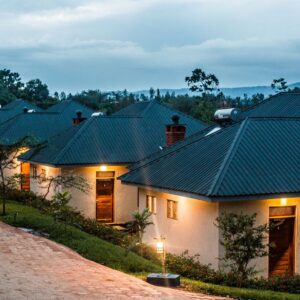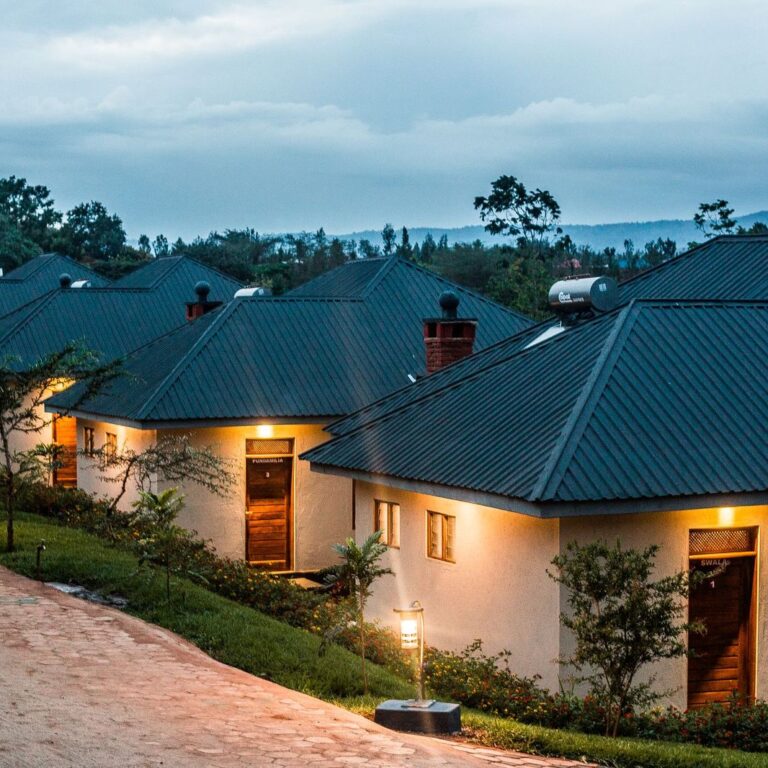Barranco, Karanga & Barafu Camp: Kilimanjaro’s Southern Circuit Route.
The Southern Circuit on Mount Kilimanjaro is a popular trekking route that takes in some of the mountain’s most stunning scenery. The route starts on the western side of the mountain and winds its way through the moorland and alpine zones, before reaching the summit at Uhuru Peak.
The Southern Circuit is a challenging but rewarding trek that offers climbers a chance to experience some of the most beautiful scenery on Mount Kilimanjaro. The route is well-maintained and there are a number of different tour operators that offer guided climbs. The Southern Circuit on Mount Kilimanjaro is a captivating path that winds beneath the Southern Ice Field, weaving through some of the mountain’s most picturesque camps: Barranco, Karanga, and Barafu Camp. Let’s explore these camps:
Barranco Camp (Elevation: 13,044 feet / 3,976 meters):
Known for its stunning views, Barranco Camp sits at the edge of a dramatic valley. The name “Barranco” means “deep ravine” or “gorge” in Spanish, aptly describing its position. The descent into this camp takes trekkers through Kilimanjaro’s Barranco Valley. Adorned with unique plant life like the giant groundsels (Dendrosenecio kilimanjari) and Lobelia deckenii. Above the campsite, the imposing Barranco Wall awaits climbers, a 843-foot (257-meter) tall cliff that appears intimidating but is actually an easy scramble with minimal exposure. Barranco Camp lies in a transitional space between the heath/moorland zone and alpine desert, where weather can swiftly shift from clear, sunny days to foggy conditions.
Karanga Camp (Elevation: 13,106 feet / 3,995 meters):
Positioned at the boundary of Karanga Valley, south of Kibo’s volcanic cone, Karanga Camp offers climbers a moment of reprieve before the final ascent stages. Some shorter route variations skip this camp and proceed directly to Barafu. Spending a night here is recommended to adjust to the altitude and reduce the risk of altitude sickness. The path from Barranco Wall to Karanga involves navigating through a series of hills. Providing spectacular views of Kilimanjaro’s icy upper slopes and the clouds below. On clear nights, the lights of Moshi town can be seen far below. Karanga Camp shares a similar climate with Barranco, lying within the same transitional zone between heath/moorland and alpine desert.
Barafu Camp (Elevation: 15,331 feet / 4,673 meters):
Barafu Camp serves as the final stop on the Southern Circuit before the summit push. It’s the base camp for climbers as they make their way to the top and back. The name “Barafu” means “ice” in Swahili, reflecting the camp’s chilly conditions and frosty nights. Perched high in Kilimanjaro’s alpine desert zone, Barafu Camp offers panoramic views of Mawenzi Peak and the vast plains below. However, the site itself is harsh and barren, characterized by bare rock and sparse vegetation.
These camps are not only waypoints on a challenging climb but also windows into Kilimanjaro’s shifting landscapes—from shrubby lower slopes to the rocky, ice-capped summit.
Here are some additional tips for trekking the Southern Circuit:
Acclimatization is essential for success on Kilimanjaro. Be sure to spend at least a few days acclimatizing to the altitude before attempting the summit push.
The weather on Kilimanjaro can change quickly. Be sure to pack for all types of weather, including rain, snow, and wind.
Be sure to drink plenty of water and stay hydrated. The altitude can make it difficult to stay hydrated, so be sure to drink more water than you think you need.
Listen to your body and take breaks when you need them. The trek to the summit is long and challenging, so be sure to take your time and listen to your body.
What is the difficulty of the Southern Circuit Route?
The Southern Circuit Route is a challenging trek. It’s longer than other routes, allowing for better acclimatization which can increase your chances of summit success. A Guide to the Southern Circuit on Mount Kilimanjaro: Barranco, Karanga & Barafu Camp. But it also means more days hiking at high altitude. This route is best suited for trekkers in good physical condition with some experience backpacking.
How long does the Southern Circuit Route take?
The Southern Circuit Route typically takes 8-9 days to complete, though some itineraries may be longer. This is because the route is designed to allow for more acclimatization days, which helps reduce altitude sickness.
What is the accommodation like on the Southern Circuit Route?
You will typically sleep in tents at campsites along the route. These campsites are basic but well-maintained and will have access to things like toilets and meals prepared by your guides.
What kind of weather can I expect on the Southern Circuit Route?
The weather on Kilimanjaro can vary greatly depending on the time of year. In general, the higher you climb the colder it will get. Expect temperatures to drop below freezing at higher camps, with the possibility of rain, snow, and strong winds.
What gear do I need for the Southern Circuit Route?
You will need a variety of gear for your Kilimanjaro trek. Including proper hiking boots, warm clothes, a rain jacket, and a headlamp. Discover the Stunning Camps on the Southern Circuit of Mount Kilimanjaro. A good sleeping bag rated to at least -10°C (14°F) is recommended. Tour operators will typically provide a more detailed gear list.
When is the best time to climb Kilimanjaro via the Southern Circuit Route?
The best time to climb Kilimanjaro is during the dry seasons. Which are from December to March and from June to September. Barranco Karanga & Barafu Camp. These months offer the best chance of clear skies and good visibility. However, the Southern Circuit Route can be less crowded during the shoulder seasons (April-May and October-November).
What are the permit fees for the Southern Circuit Route?
Permit fees for Kilimanjaro can vary depending on the route, park fees, and length of your trek. It’s important to check with your chosen tour operator for the most current pricing.
Do I need a guide for the Southern Circuit Route?
Yes, it is mandatory to hire a certified guide for your Kilimanjaro trek. Barranco Karanga & Barafu Camp. This is for your safety and ensures you have a qualified professional to navigate the mountain and address any concerns you may have.
Which Routes Use the Southern Circuit?
There isn’t one single route called the Southern Circuit on Kilimanjaro. The Southern Circuit refers to the general area on the western side of the mountain that several trekking routes utilize. Exploring the Southern Circuit: Barranco Karanga & Barafu Camp. These routes all climb through similar environments with stunning scenery and offer variations in difficulty and length. Some of the most common routes that take advantage of the Southern Circuit include:
The Lemosho Route via The Southern Circuit
The Machame Route via The Southern Circuit
The Umbwe Route via The Southern Circuit






